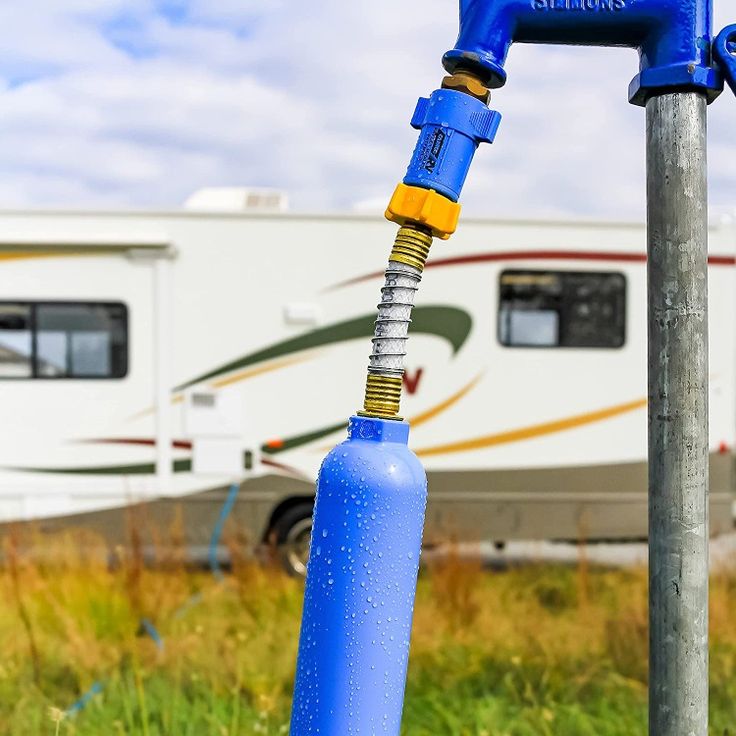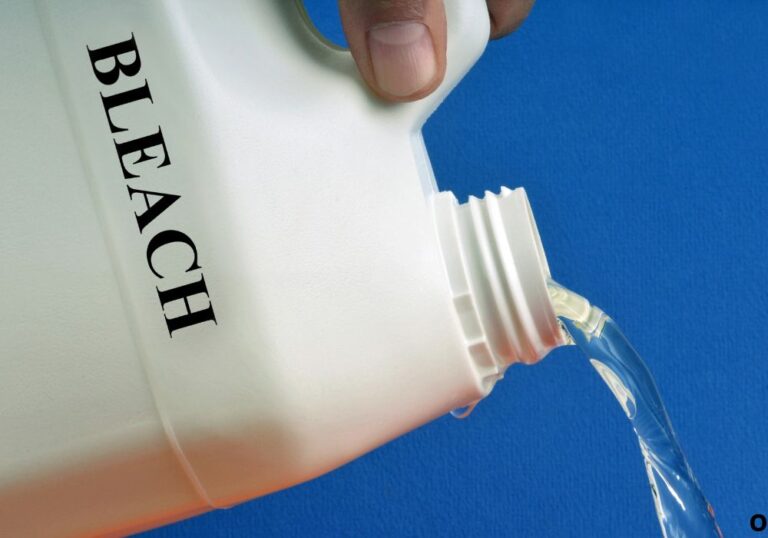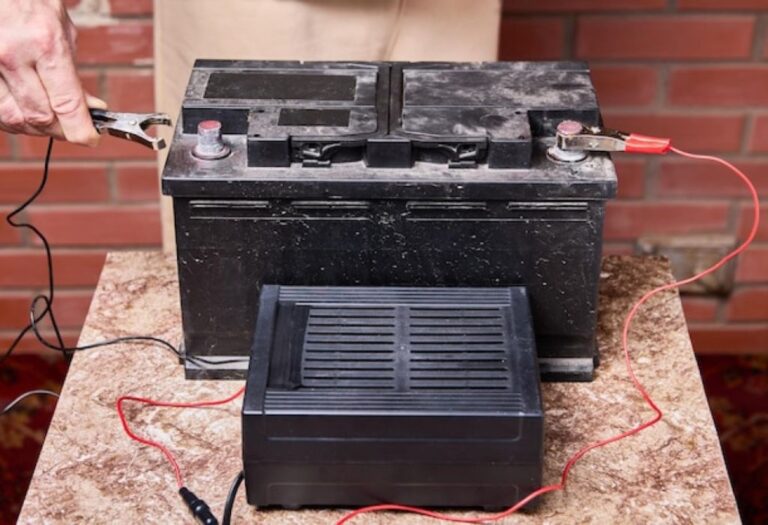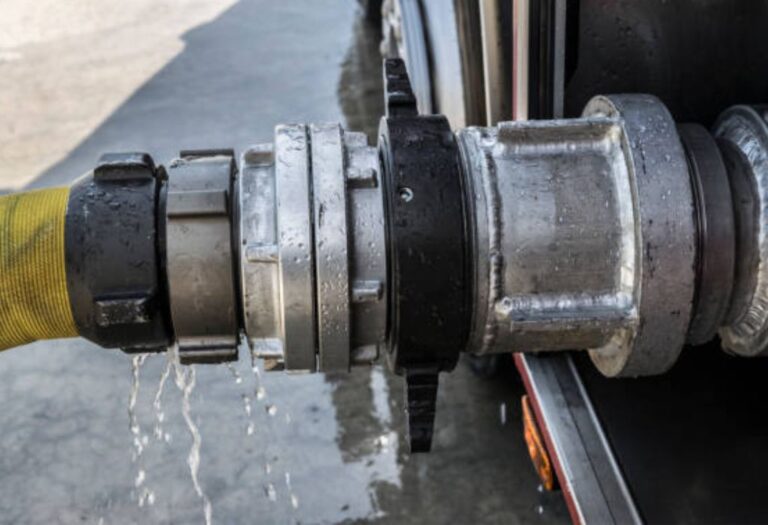Do RV Water Pressure Regulators Go Bad Over Time?
Imagine pulling into a campground after a long drive, eager to relax and enjoy a hot shower.
Instead, the water sputters or sprays too hard, leaving you frustrated and wondering what went wrong.
RV water systems are delicate and easily affected by external conditions.
Campground water pressure often fluctuates wildly and can exceed safe limits for RV plumbing.
Some parks record water pressures above 100 PSI, far higher than what most RV systems are built to handle.
According to the Family Motor Coach Association, pressure above 60 PSI can lead to leaks or burst fittings inside your RV.
This is where the RV water pressure regulator becomes essential.
It’s a small but powerful device that protects your system by keeping water pressure at a safe and consistent level.
However, like all mechanical parts, water pressure regulators don’t last forever.
Over time, exposure to corrosion, hard water minerals, and temperature swings can weaken their internal components.
A worn-out regulator can cause both weak flow and dangerous spikes in pressure.
Ignoring these warning signs can result in costly plumbing repairs and potential water damage inside your rig.
For RVers who travel frequently or stay full-time on the road, regular inspection of this small device is crucial.
Knowing how long regulators last, what causes them to fail, and when to replace them can prevent major headaches.
This article explains how RV water pressure regulators work, the signs they’re going bad, how to test them, and how to maintain or replace them effectively.
By the end, you’ll know how to keep your water system safe, efficient, and ready for your next adventure.
What Does an RV Water Pressure Regulator Do?

An RV water pressure regulator is one of the smallest yet most essential tools in your water system. Its primary role is to control the pressure of incoming water from external sources like campgrounds or city water connections.
Most campground water systems are designed for residential use and often exceed the safe range for RV plumbing. When connected directly, this high pressure can strain pipes, loosen fittings, and even cause burst lines inside the RV.
The regulator works by limiting the pressure to a steady and safe level, usually between 40 to 50 PSI, which protects the internal components. It also ensures a smooth, consistent flow of water to your sinks, showers, and appliances without fluctuations.
There are two main types of RV water pressure regulators: non-adjustable (fixed) and adjustable. Non-adjustable regulators are preset to a safe PSI, while adjustable ones allow you to fine-tune the output using a gauge for better control in varying water conditions.
Without a regulator, even a single night at a high-pressure campground can cause lasting damage. From cracked seals to costly water heater failures, the risk far outweighs the small investment in this protective device.
Questions About RV Water Pressure Regulators
Why do RVs need a water pressure regulator?
They protect plumbing systems from excessive water pressure that could cause leaks or pipe bursts.
How much pressure can an RV handle?
Most RVs are designed to handle up to 60 PSI, but the ideal operating range is around 40–50 PSI.
What happens if you don’t use a regulator?
Unregulated water pressure can lead to leaks, blown fittings, and damage to appliances.
Are all regulators the same?
No. Some are brass for durability, while others are plastic for lightweight use.
Do RV Water Pressure Regulators Go Bad?
Yes, RV water pressure regulators can go bad over time. Like any component exposed to water and outdoor conditions, they wear out due to mineral deposits, corrosion, or internal spring fatigue.
When regulators fail, they either restrict water flow too much or allow too much pressure through. Both issues can disrupt your system’s efficiency and safety.
Continuous use, hard water, and lack of maintenance accelerate the breakdown of internal parts. Seals and springs inside the regulator can weaken, and debris buildup may block proper flow.
Even durable brass regulators aren’t immune to failure if exposed to years of moisture or freezing temperatures without winterization.
Questions About Regulator Failure
How long does an RV water pressure regulator last?
Typically between 3 to 5 years, depending on usage, water quality, and maintenance.
Can a bad regulator still pass some water?
Yes, but the flow may be inconsistent, or pressure may spike unpredictably.
What causes a regulator to fail early?
Hard water, rust, lack of cleaning, or leaving it attached during winter can reduce its lifespan.
Can freezing damage a regulator?
Absolutely. Water trapped inside can expand and crack the internal parts when temperatures drop.
Signs Your RV Water Pressure Regulator Is Going Bad
Recognizing the early signs of a failing regulator helps prevent plumbing damage. The most common symptom is fluctuating water pressure while connected to city water.
If you notice weak flow one minute and high pressure the next, it’s a clear indication the regulator isn’t working properly. Another sign is leakage around fittings or hoses, especially near the connection point.
A noisy water system or pulsing sound when faucets are opened also suggests uneven pressure control. Visible corrosion, discoloration, or mineral buildup on the regulator are red flags too.
In some cases, even with consistent pressure, low flow can mean the internal spring or diaphragm is partially blocked. Testing is the best way to confirm the cause before replacing it.
Questions About Bad Regulator Symptoms
Why does my RV have low water pressure even with a regulator?
The regulator may be clogged or worn out, restricting water flow.
Can water leaks indicate a bad regulator?
Yes. Excess pressure can cause fittings to loosen or seals to crack.
Is uneven pressure always a regulator issue?
Not always, but it’s a strong possibility if the problem persists across multiple faucets.
Should you replace a corroded regulator immediately?
Yes. Corrosion affects internal accuracy and can lead to complete failure.
How to Test an RV Water Pressure Regulator

Testing ensures your regulator maintains the proper PSI. Start by connecting a water pressure gauge to your RV’s city water inlet, ideally before the regulator.
Turn on the water supply and record the pressure reading. Then connect the regulator and take another reading at the outlet side.
A functional regulator should lower the pressure to between 40–50 PSI. If the reading remains above 60 PSI, it’s failing and needs replacement.
For adjustable regulators, use the adjustment screw to fine-tune pressure while monitoring the gauge. Regular testing every few months ensures safety, especially when visiting new campgrounds.
How often should you test your regulator?
Every few months or before long trips.
What tools are needed for testing?
A reliable pressure gauge and a clean water source.
Can you test without a gauge?
Not accurately. A gauge is the only way to measure precise PSI levels.
What is the best pressure setting for RVs?
Between 45–50 PSI for most plumbing systems.
How to Maintain and Clean a Water Pressure Regulator
Proper maintenance extends your regulator’s lifespan. Regularly rinsing the screen filter removes debris that could restrict flow.
Avoid leaving the regulator connected during storage, as trapped moisture promotes corrosion. Instead, detach, dry, and store it in a sealed container.
Once or twice a year, soak the regulator in a vinegar solution to dissolve mineral buildup from hard water. This simple routine prevents internal clogs and maintains consistent performance.
Inspect O-rings and seals frequently to ensure they aren’t cracked or brittle. Replacing these small parts can often restore functionality without buying a new regulator.
How do you clean mineral deposits?
Soak the regulator in a vinegar-water mix for 30 minutes.
Should you lubricate a regulator?
No. Most are factory-sealed and don’t require lubrication.
How should you store a regulator during winter?
Keep it in a dry, frost-free area to prevent freezing.
Does flushing the regulator improve flow?
Yes. Flushing removes trapped particles that may restrict water flow.
When to Replace Your RV Water Pressure Regulator
Even with proper care, regulators eventually need replacement. If testing shows fluctuating pressure or visible corrosion, it’s time to upgrade.
Replacing your regulator ensures consistent protection for your RV’s plumbing system. Modern models offer better materials, improved gauges, and adjustable settings for accuracy.
Choose a brass or stainless steel regulator with a built-in gauge for best results. These materials resist corrosion and deliver long-term performance.
It’s also wise to replace the regulator if you experience repeated hose leaks or water hammering sounds despite maintenance. These are signs your current unit can’t stabilize pressure effectively.
How much does a new RV regulator cost?
Anywhere from $15 to $60, depending on type and material.
Can you replace it yourself?
Yes. Installation only takes a few minutes with basic tools.
Should you buy an adjustable model?
Adjustable regulators provide flexibility and are ideal for frequent travelers.
Are digital regulators worth it?
They offer precise readings but aren’t necessary for basic setups.
Tips to Prevent Regulator Damage
Preventive care keeps your regulator reliable for years. Always disconnect it after trips and drain excess water.
Avoid leaving it exposed to freezing temperatures or direct sunlight, which accelerates material fatigue.
Use Teflon tape when connecting to minimize leaks and prevent thread wear. Installing a water filter upstream of the regulator helps block sediment and extends its lifespan.
Check PSI regularly using a gauge to ensure your system isn’t overpressurized, especially in unfamiliar campgrounds.
Questions About Prevention

Can a water filter help protect the regulator?
Yes. It traps debris before it reaches the regulator.
Is sunlight harmful to regulators?
Over time, UV exposure can weaken plastic components and seals.
Should you remove it after every trip?
Yes, especially if storing the RV for long periods.
How often should you replace Teflon tape?
Reapply new tape each time you reconnect fittings.
Conclusion
An RV water pressure regulator might seem like a simple accessory, but it’s vital for protecting your plumbing system. Over time, exposure to water, heat, and minerals can cause it to degrade and lose accuracy.
Recognizing the signs of failure, testing regularly, and performing basic maintenance can save you from leaks, bursts, and expensive repairs. A good regulator ensures consistent pressure, safer water flow, and peace of mind at every campground.
If your current one shows signs of wear, don’t wait for a breakdown. Replace it promptly with a durable, adjustable model and protect your RV for the long haul.
I’m David R. Coleman, the founder, lead writer, and lifelong tool enthusiast behind GarageToolPro.com. With years of experience in automotive repair, woodworking, and home DIY projects, I created this platform to share practical tips, detailed tool reviews, and step-by-step guides that help mechanics, hobbyists, and homeowners get the job done right the first time.






